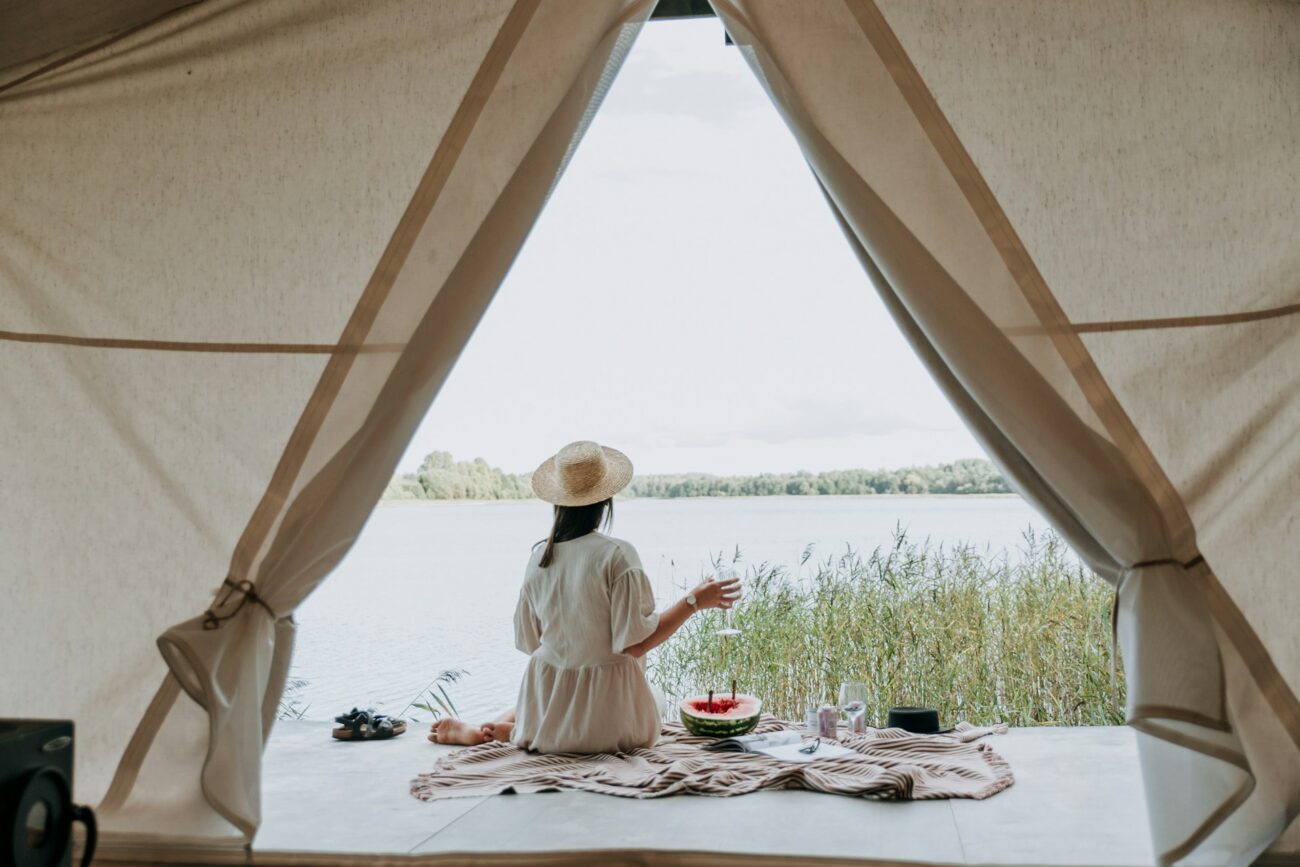Camping opens up a world of outdoor adventure, connection with nature, and unforgettable experiences under the stars. For newcomers, however, the prospect of spending a night outside can seem intimidating—filled with unknowns about gear, safety, comfort, and basic outdoor skills. The good news is that camping doesn’t require you to be a seasoned outdoorsperson from the start.
With some preparation, proper equipment, and a positive mindset, even complete beginners can enjoy a comfortable and rewarding first camping experience. This guide will walk you through everything you need to know to transition from indoor dweller to confident camper, addressing common concerns and providing practical advice for your inaugural outdoor overnight adventure.
Start Small: Choose the Right Camping Experience
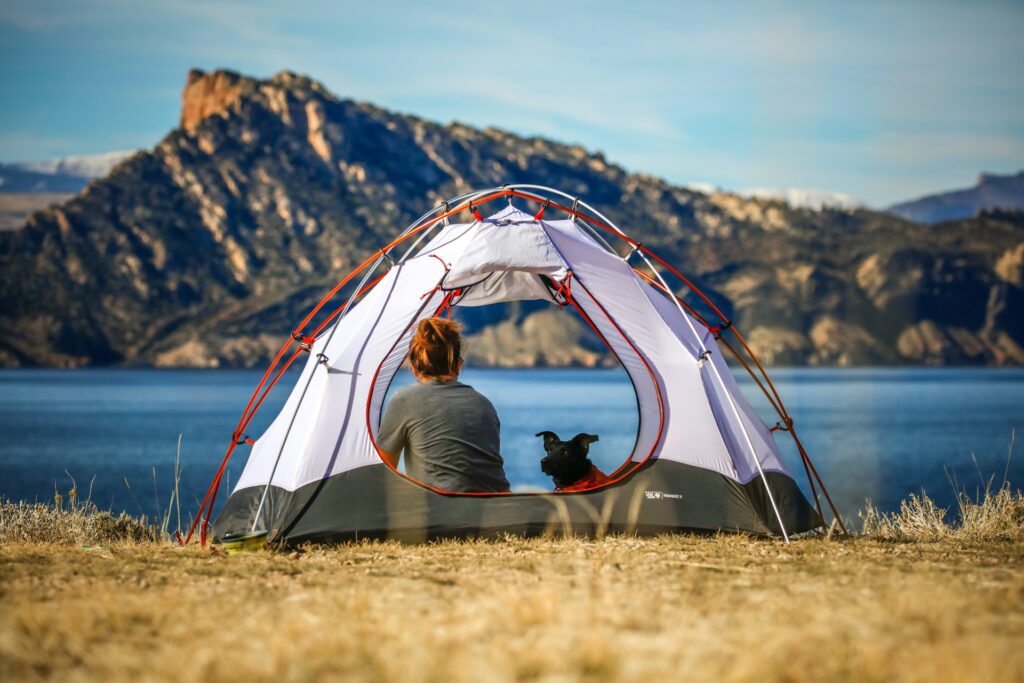
When embarking on your first camping adventure, resist the temptation to dive into a remote backcountry experience far from civilization. Instead, opt for a developed campground with amenities like restrooms, running water, and staff who can assist if needed. Many state parks and national forests offer well-maintained campgrounds with clearly marked sites and basic facilities that provide a gentle introduction to outdoor living.
Consider camping close to home for your first trip—within an hour’s drive is ideal—so you can easily return if the experience becomes overwhelming or if you’ve forgotten essential items. Some campgrounds even offer “glamping” options with pre-set tents or cabins, providing an intermediate step between indoor comfort and traditional tent camping.
Essential Gear: The Camping Basics
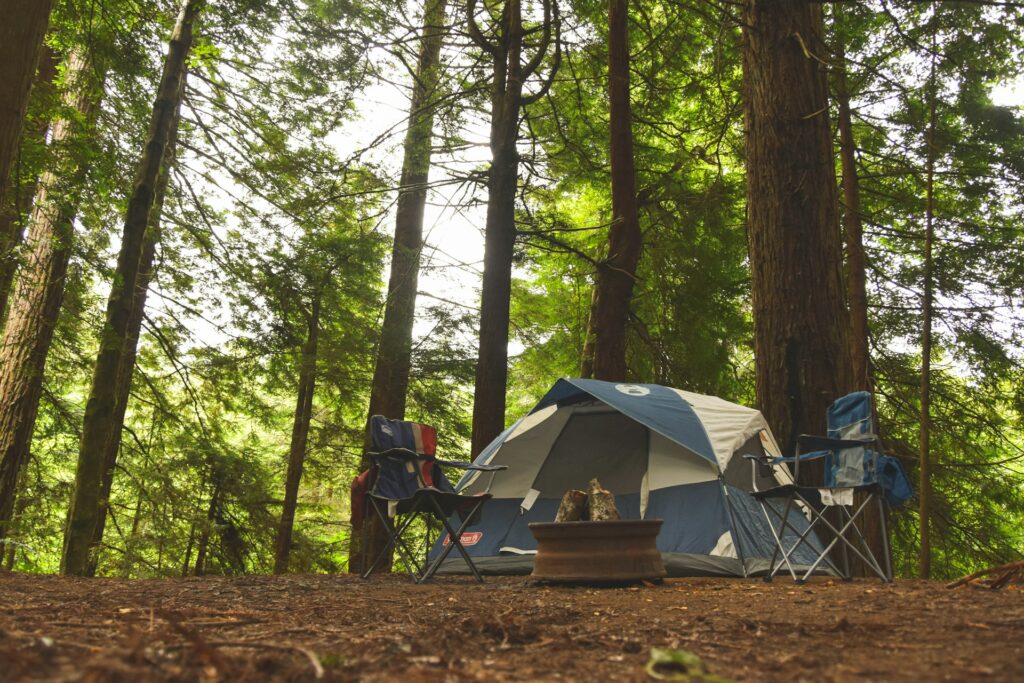
While camping gear can become an extensive collection over time, beginners need just a few fundamental items to ensure a comfortable first experience. Start with a quality tent appropriate for your group size (always size up for comfort—a “4-person” tent comfortably fits 2-3 people), a sleeping bag rated for temperatures lower than you expect to encounter, and a sleeping pad or air mattress to insulate and cushion you from the ground.
Other essentials include a flashlight or headlamp with extra batteries, a multi-tool or pocket knife, a first aid kit, and appropriate clothing layers for changing weather conditions. Consider borrowing gear from friends or renting equipment for your first trip before investing in your own—this allows you to test different options and determine what works best for your camping style.
Shelter Savvy: Setting Up Your First Tent
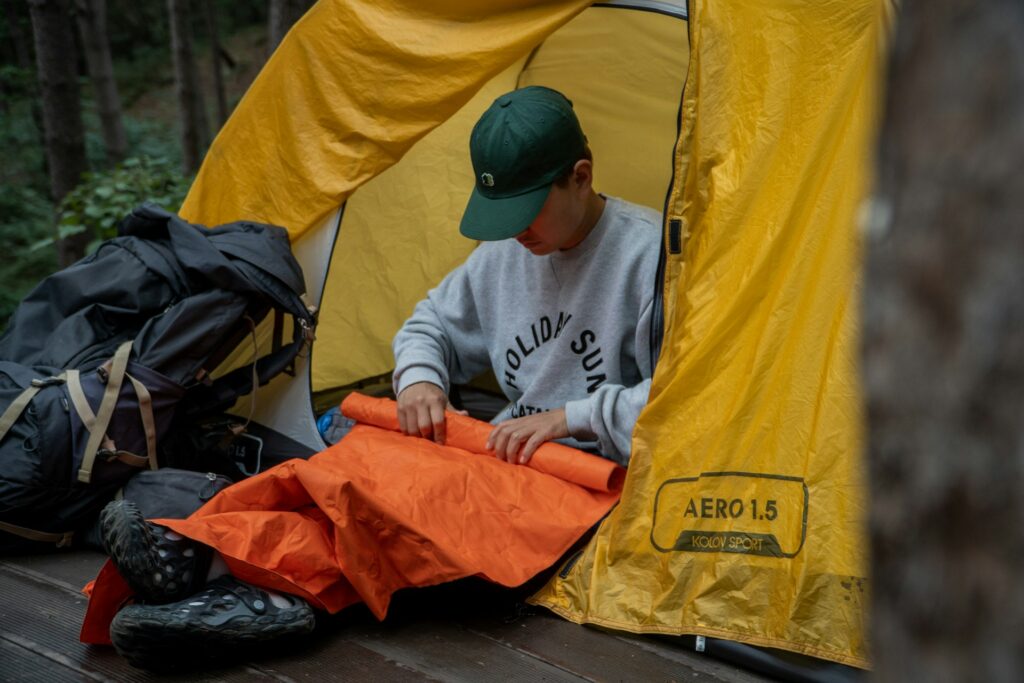
Your tent will be your home away from home, so knowing how to set it up properly is crucial for camping comfort and weather protection. Practice setting up your tent at home before your trip—this familiarizes you with the process and confirms you have all necessary components. When selecting a campsite, look for level ground free of rocks and roots, and position your tent with the door facing away from prevailing winds.
Always use the rainfly, even if clear skies are forecasted, as weather can change quickly and morning dew can make for a damp awakening. Many first-time campers make the mistake of setting up too close to water sources—maintain at least 200 feet distance from lakes or streams to minimize environmental impact and avoid areas that might flood during rainfall.
Sleep Systems: Ensuring Restful Nights Outdoors
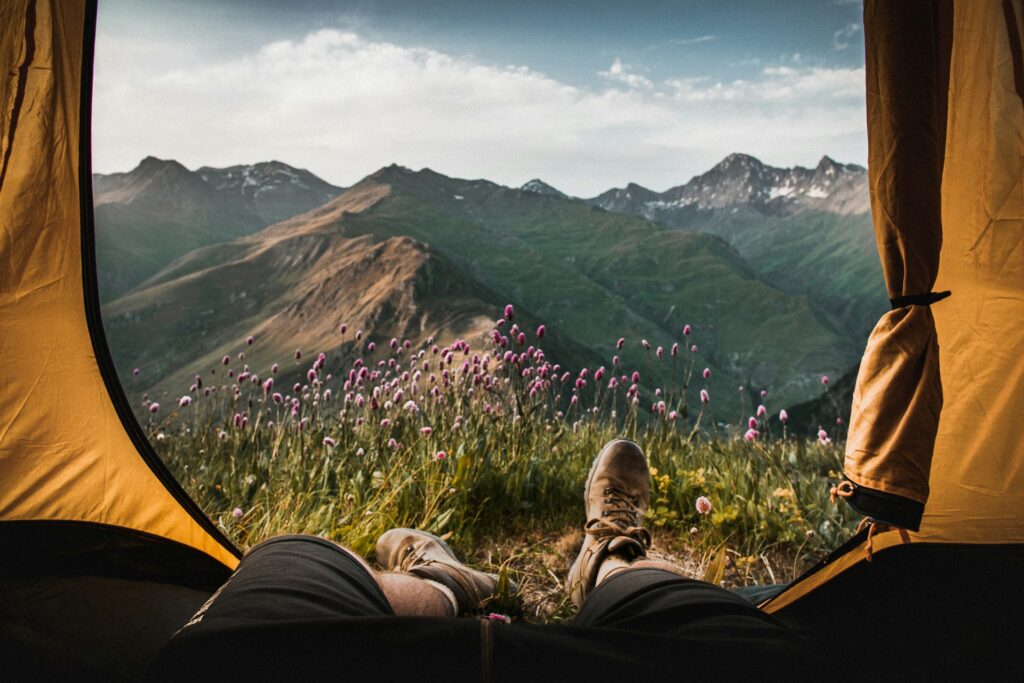
Quality sleep dramatically affects your camping experience, making your sleep system one of the most important considerations for beginners. Beyond a weather-appropriate sleeping bag, invest in proper insulation from the ground—the earth pulls heat from your body much faster than air, even on warm nights. A closed-cell foam pad provides basic insulation, while air mattresses or inflatable sleeping pads offer additional comfort and warmth.
Consider your natural sleeping position when selecting a sleeping pad—side sleepers typically need thicker pads than back sleepers. Bring a small pillow or use a stuff sack filled with soft clothing to support your neck, and wear clean, dry clothes reserved specifically for sleeping to maintain warmth and hygiene throughout the night.
Campsite Kitchen: Food Planning and Preparation
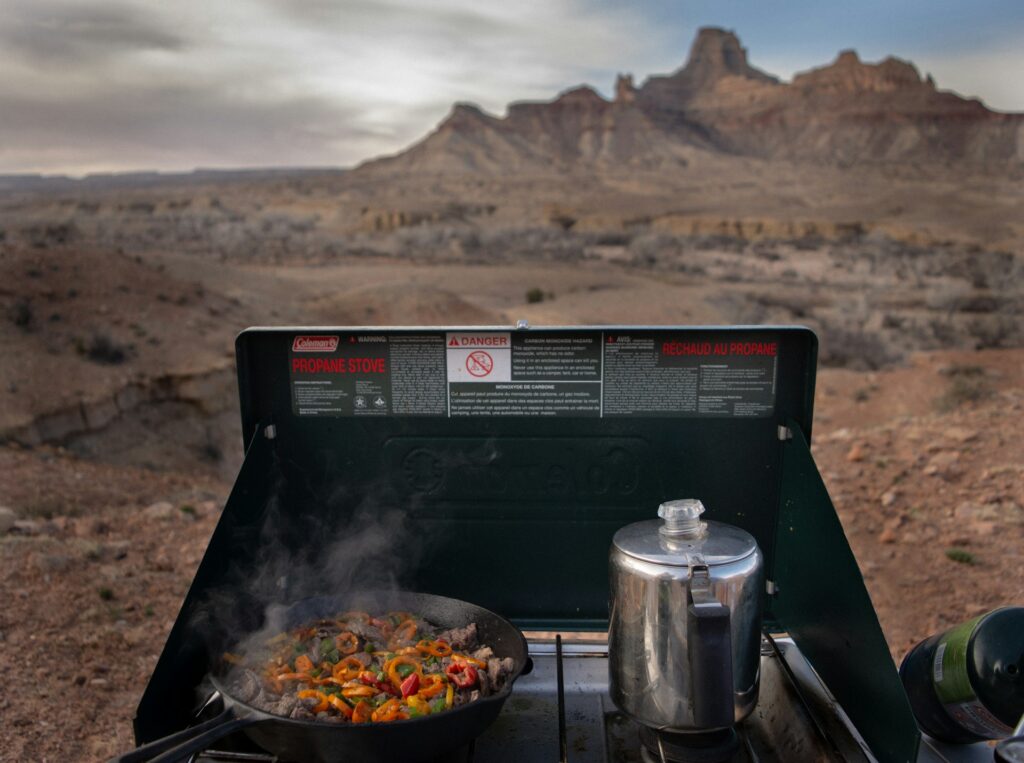
Meal planning significantly impacts your camping enjoyment, with the ideal approach balancing convenience, nutrition, and minimal cleanup. For your first outing, prepare simple meals that require minimal cooking equipment—sandwiches, pre-cooked foods, and one-pot meals are excellent choices. A basic camp kitchen includes a camp stove with fuel, a pot or pan, eating utensils, a cooler for perishables, and water containers.
Plan each meal before your trip and prepare ingredients at home when possible—pre-chopping vegetables or pre-mixing spices saves time and reduces the need for extensive food preparation at camp. Always store food properly to prevent wildlife encounters—use sealed containers and never keep food in your tent, even seemingly innocent items like gum or toothpaste can attract animals.
Staying Clean: Hygiene in the Outdoors
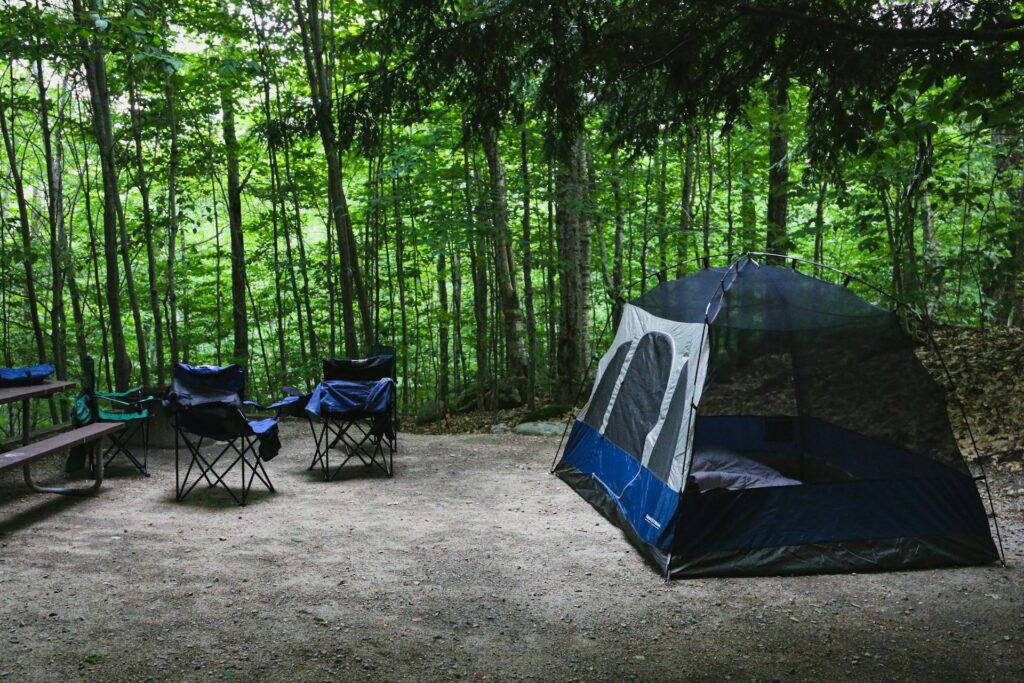
Maintaining basic hygiene while camping helps prevent illness and increases overall comfort during your outdoor adventure. Pack biodegradable soap, hand sanitizer, toilet paper, and a small towel for personal cleanliness. Learn proper techniques for washing dishes using minimal water—typically a three-basin system of wash water, rinse water, and sanitizing solution—and dispose of gray water at least 200 feet from water sources.
For personal cleanliness, bring pre-moistened body wipes for quick refreshing when showers aren’t available, and always brush teeth away from water sources, dispersing the toothpaste widely rather than spitting in one concentrated area. Understanding the campground’s bathroom facilities in advance helps you prepare appropriately—some have flush toilets and showers, while others might have vault toilets or require you to follow Leave No Trace principles for human waste disposal.
Weather Wisdom: Preparing for the Elements
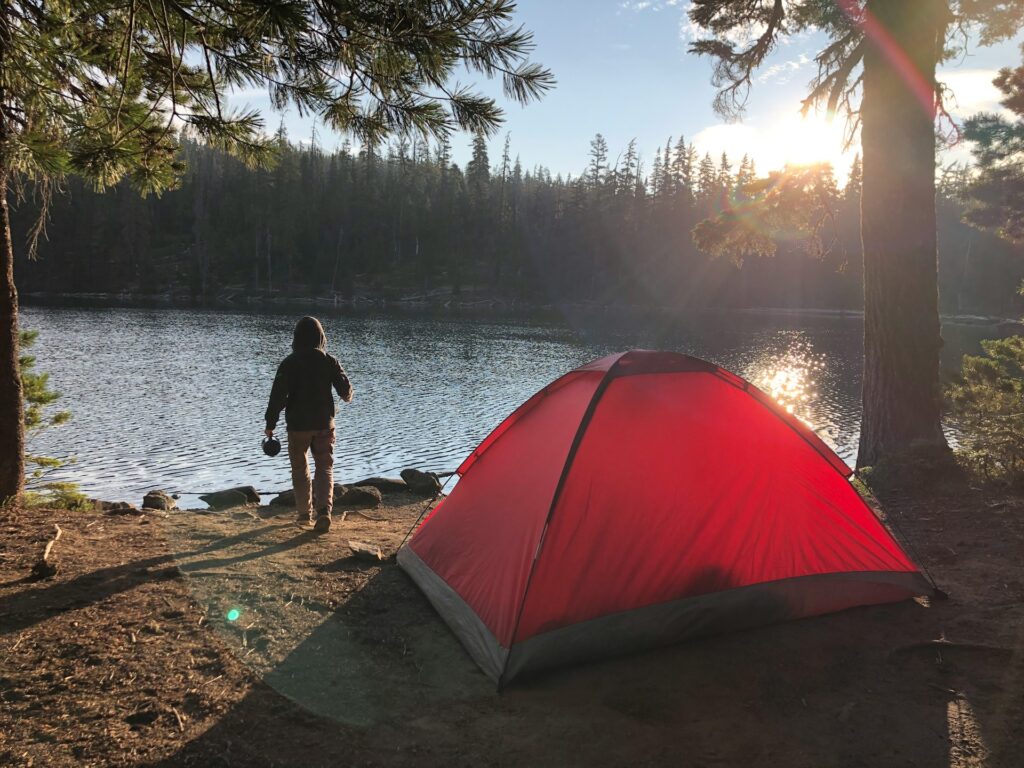
Weather conditions can make or break a camping trip, particularly for newcomers still learning to adapt to outdoor living. Check forecasts thoroughly before your trip and prepare for conditions slightly worse than predicted—temperatures often drop more than expected at night, and pop-up storms can occur even when rain chances seem low.
Pack clothing that can be layered for versatility, including moisture-wicking base layers, insulating mid-layers, and waterproof outer layers. Always bring a warm hat, as significant body heat escapes through your head, and have extra socks to ensure dry feet regardless of conditions. Understand basic signs of hypothermia and heat exhaustion, as these conditions can develop surprisingly quickly in outdoor settings when unprepared.
Campfire Confidence: Safe Fire Practices
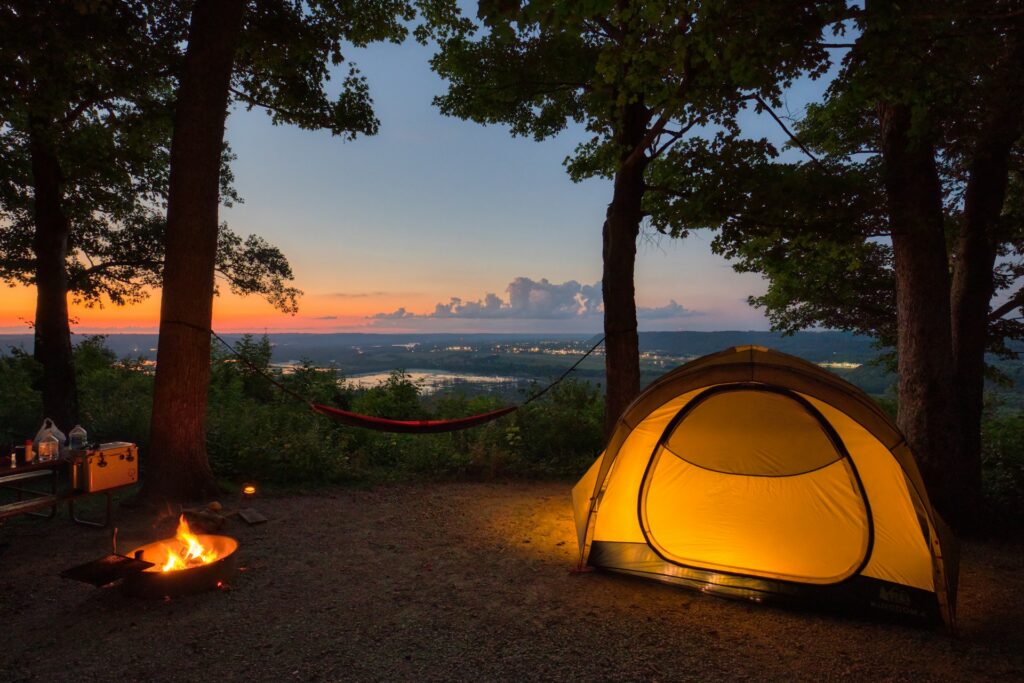
For many, the campfire represents the heart of the camping experience, providing warmth, light, cooking capability, and a natural gathering point. Before your trip, check fire regulations for your destination, as restrictions often apply during dry seasons or in certain ecosystems. Learn proper fire building techniques, starting with a small collection of tinder (dry leaves, paper, or commercial fire starters), kindling (pencil-thickness sticks), and fuel wood (larger branches).
Always use established fire rings when available, keep your fire manageable, and maintain a water source nearby for emergency extinguishing. Never leave a fire unattended, and ensure it’s completely out before sleeping or leaving the site—douse thoroughly with water, stir the ashes, and continue until everything is cool to the touch.
Wildlife Awareness: Respectful Coexistence
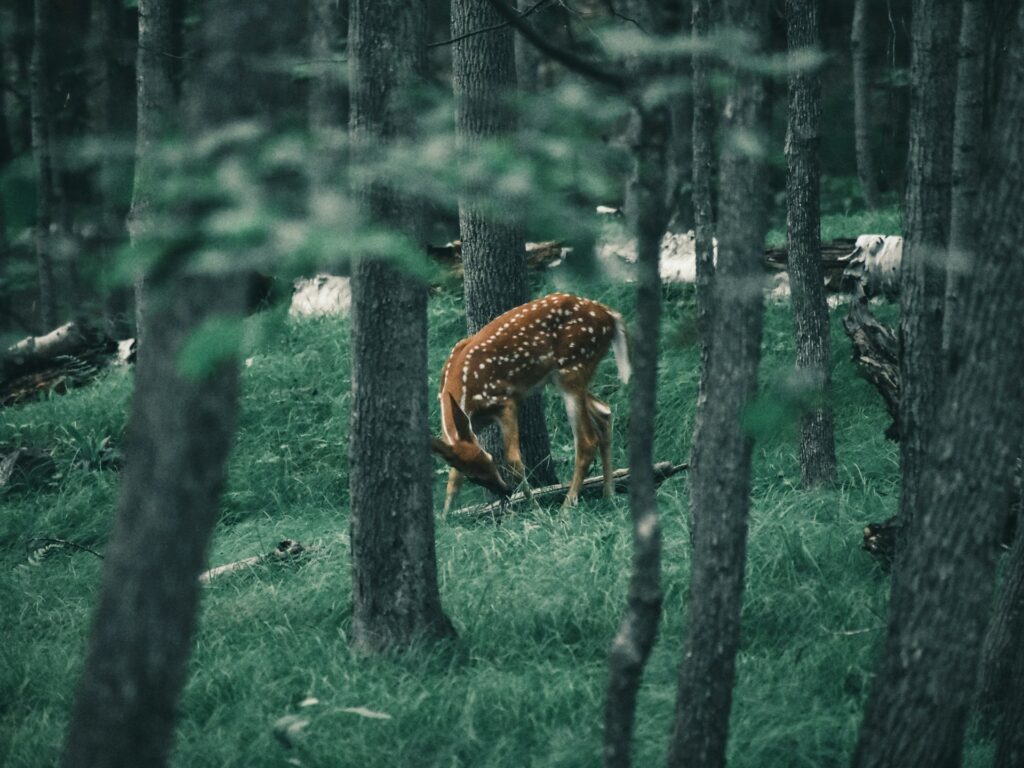
Encountering wildlife often ranks among campers’ most memorable experiences, though proper knowledge ensures these encounters remain positive for both humans and animals. Research what wildlife you might encounter at your destination and understand appropriate responses—most animals avoid humans unless habituated to associate people with food. Store all food, trash, and scented items (including toiletries) properly using provided food lockers, bear canisters, or by hanging food bags from trees depending on local recommendations.
Observe wildlife from a distance, never feed animals intentionally or unintentionally, and make noise while hiking to avoid surprising animals on trails. Remember that you’re visiting their home—respecting wildlife habitat preserves natural behaviors and protects both the animals and future campers.
Navigation Necessities: Finding Your Way
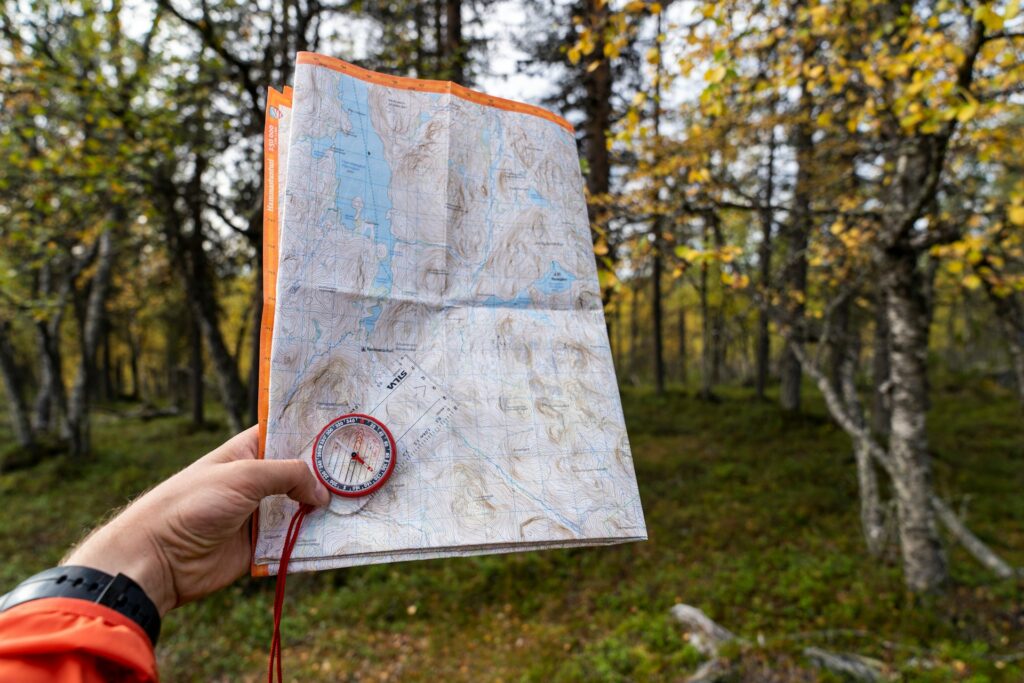
Even at developed campgrounds, basic navigation skills enhance safety and confidence during your camping experience. Bring a map of the campground and surrounding area, noting the locations of your campsite, water sources, restrooms, and emergency services. Many camping areas have limited or no cell service, so don’t rely exclusively on phone-based navigation or communication.
Consider bringing a compass and learning to use it in conjunction with your map—these basic skills form the foundation for more advanced outdoor adventures you might pursue later. Before leaving for hikes, even short ones, inform someone of your intended route and expected return time as a basic safety precaution against becoming disoriented or injured away from camp.
Leave No Trace: Camping with Minimal Impact
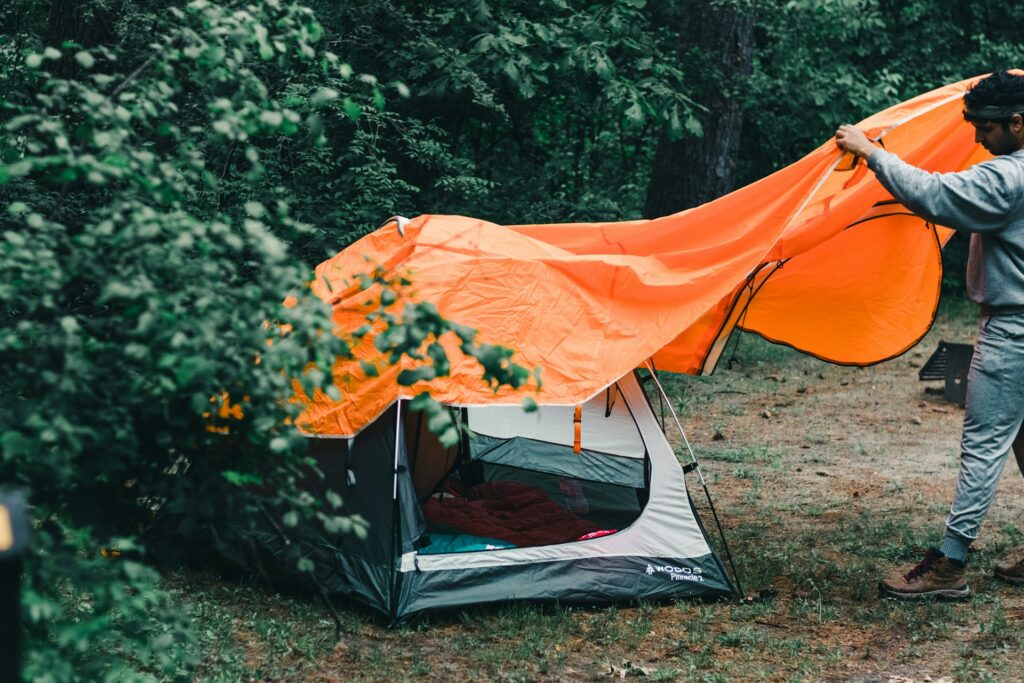
Responsible camping ensures beautiful outdoor spaces remain pristine for wildlife and future visitors alike. Familiarize yourself with the seven Leave No Trace principles, which provide a framework for minimizing your environmental impact while enjoying nature. Always pack out everything you bring in, including seemingly harmless items like fruit peels or eggshells that take surprising time to decompose.
Stay on established trails and camping areas to prevent vegetation damage and soil erosion. Respect quiet hours and maintain appropriate distance from neighboring campsites to preserve the natural soundscape and others’ experiences. Learning to leave places better than you found them—perhaps by picking up litter left by less conscientious visitors—establishes good habits that benefit the entire outdoor community.
Safety First: Emergency Preparedness

While camping is generally safe, being prepared for emergencies provides peace of mind and enables quick response to unexpected situations. Create a basic first aid kit tailored to your specific needs, including treatments for common camping issues like insect bites, minor burns, blisters, and cuts. Know the location of the nearest hospital or urgent care facility to your campground, and bring any personal medications with extra doses in case your trip extends unexpectedly.
Research cell phone coverage at your destination and consider communication alternatives like walkie-talkies for areas without service. Share your detailed itinerary with a trusted person not on the trip, including when to expect communication from you and what actions to take if they don’t hear from you by a specified time.
Beyond the First Trip: Building Camping Skills
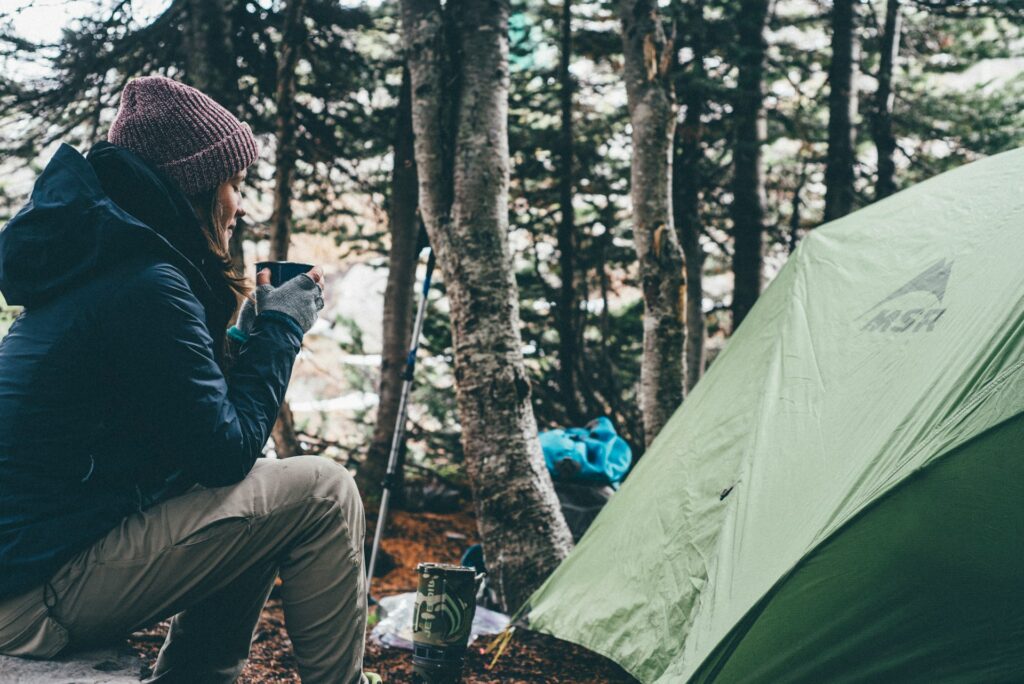
After your initial camping experience, reflect on what aspects you enjoyed most and what challenges you faced to guide your future outdoor adventures. Consider joining a camping club or social media group where you can connect with more experienced campers who share your specific interests, whether that’s stargazing, fishing, hiking, or simply relaxing in nature.
Gradually expand your comfort zone by trying different camping environments, seasons, or activities that build on your foundational knowledge. Invest in quality gear progressively, focusing first on items that most significantly impact comfort and safety based on your experiences. Remember that becoming a confident camper is a journey—each trip builds skills and memories that enrich your outdoor capabilities and connection to the natural world.
Conclusion
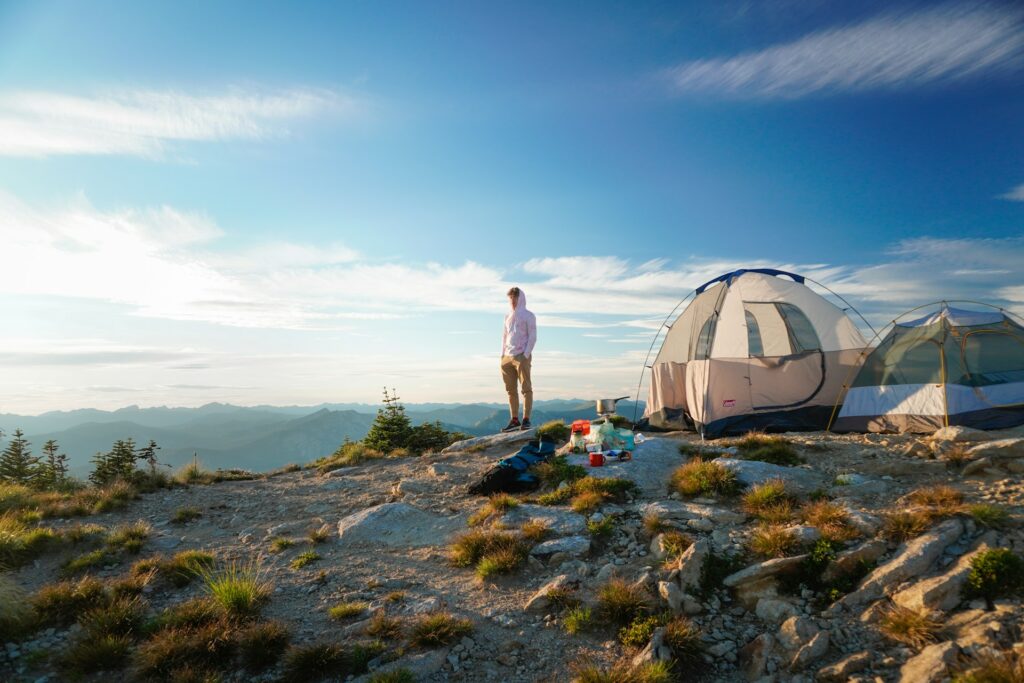
Camping represents one of the most accessible ways to disconnect from daily routines and reconnect with nature’s rhythms. While the initial learning curve might seem steep, each outdoor experience builds confidence and capability. By starting with appropriate expectations, basic but adequate gear, and a willingness to embrace both the challenges and joys of outdoor living, even lifelong indoor dwellers can discover the profound satisfaction of falling asleep under the stars.
Your first camping trip marks the beginning of a potentially lifelong relationship with the outdoors—one that offers physical benefits, mental rejuvenation, and lasting memories that simply can’t be replicated in other settings. As you gain experience, you’ll develop your own camping style and preferences, but the fundamentals outlined here will serve as your foundation for countless adventures ahead.

